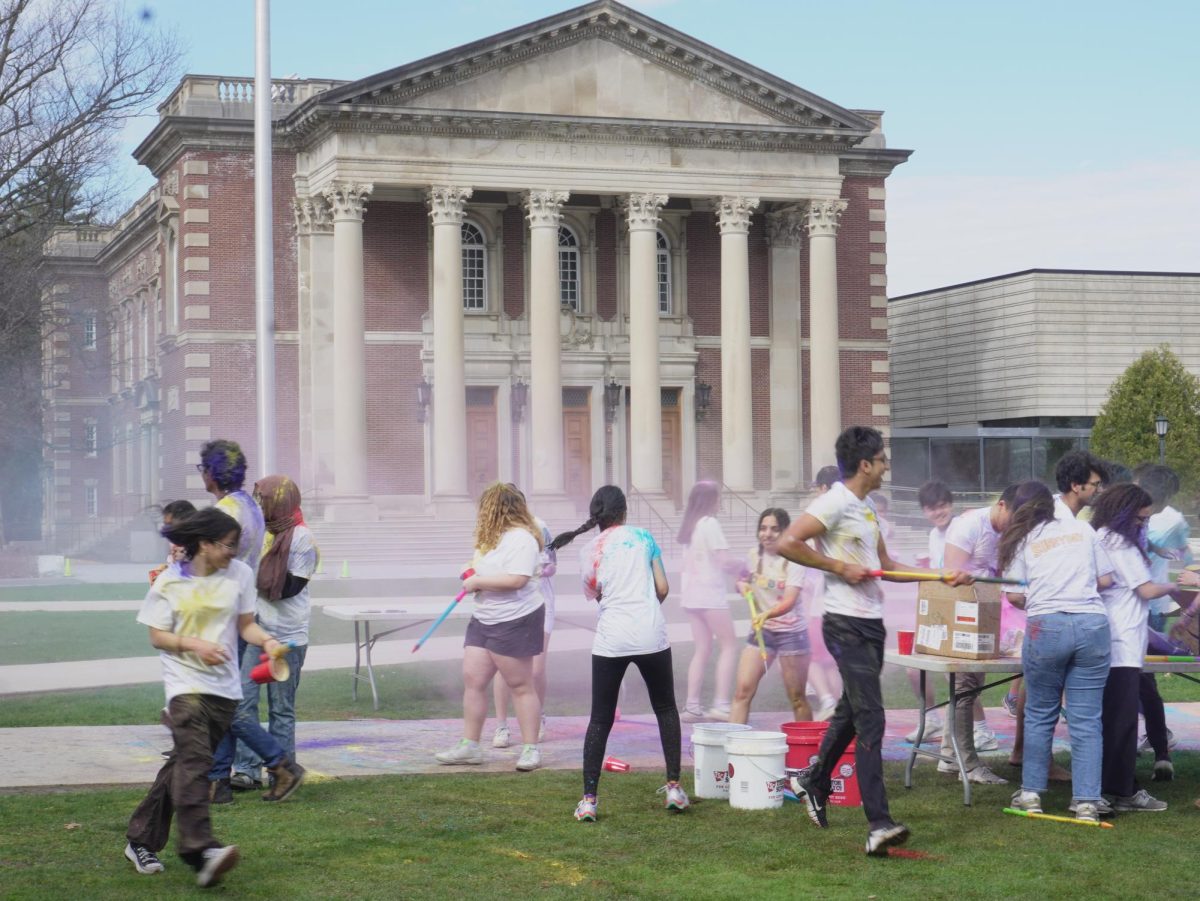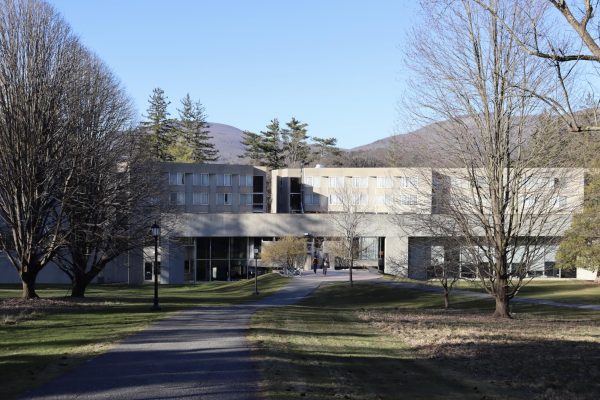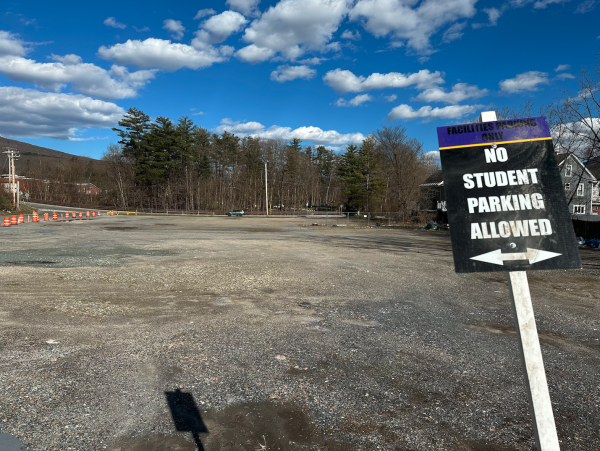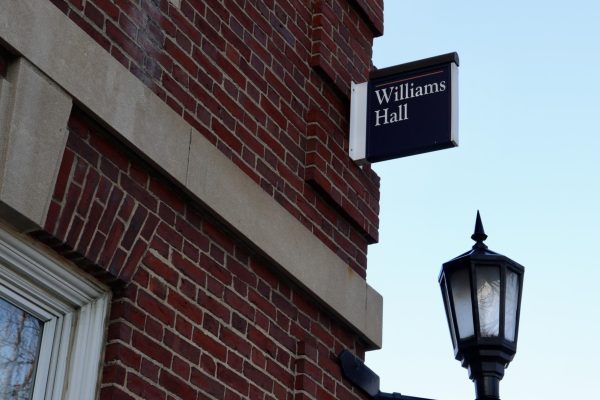The struggles of following a special diet at the College
October 6, 2021
For most Williams students, the first week of the semester was fresh and exciting, with new classes, new rooms, and new freedoms after a year-plus of COVID restrictions. For me, it was hell on earth. Every night for a week, I woke up in unimaginable pain: burning in my chest, cramping in my abdomen, and intense nausea. I barely slept, and I was terrified to eat. The cause of my condition wasn’t COVID or the flu — it was the dining hall.
I have celiac disease, an autoimmune disorder that causes hypersensitivity to even the smallest amounts of gluten. When I eat wheat, barley, or rye, my body produces antibodies that attack my small intestine, destroying the finger-like protrusions called microvilli that absorb nutrients. There is no cure, and, left untreated, the condition can lead to multiple sclerosis (MS), osteoporosis, infertility, malnutrition, and even certain types of cancer. To manage celiac disease, I have to maintain a strict gluten-free diet. There is no room for error; cross-contamination is a chief concern. Food that is technically gluten-free can be just as dangerous to celiacs if prepared using equipment that has trace amounts of gluten on it, or if the person preparing the food has touched gluten at any point in the process.
Williams students with dietary restrictions are encouraged to adhere to a “Designated Meal Plan.” These meals are specially made to meet each student’s needs and can be picked up in takeout containers at many dining locations. Students work with a nutritionist to coordinate where and when they receive these meals. I have been on and off the Designated Meal Plan in the past for various reasons, but this year I elected to receive all of my designated meals at Whitmans’ Dining Hall after I was informed it was the safest option.
When I started having severe celiac reactions, I was told that the designated meals were safe. Unfortunately, this was not the case. When something goes wrong with designated meals, students with severe dietary concerns have nowhere to turn. Although there are gluten-free options at Lee Snack Bar and ’82 Grill, neither establishment can ensure a lack of cross-contamination with gluten-containing items. Driscoll and Mission Dining Halls do not have dedicated areas in their kitchens where gluten-free foods are prepared. Eco Cafe and Goodrich are similarly unable to provide safe options. Even the buffet line at Whitmans’ is dangerous; the shared serving utensils create opportunities for cross-contamination at the dedicated gluten-free and vegan station. Long lines and gates at the entrances and exits make it difficult to request changes to meals if something is wrong or missing. The only way celiacs can eat at Williams is by praying their food is made correctly and safely every time, which has not been my experience in the past.
Students with dietary restrictions are just like everyone else. They want the flexibility to order their own meals; they want a variety of safe, palatable options; they want a backup plan in case their designated meal is a failure. Think of how many times you’ve ordered a pizza from ’82 Grill or a sandwich from Lee when the dining hall menus looked questionable. Students with celiac disease never have that choice about what or where they eat; the College simply does not provide us with that kind of support. The dedicated gluten-free kitchen space at Whitmans’ doesn’t even have its own oven.
In many cases, students on special diets can’t choose their own designated menus. Before I got sick, my meals consisted of a portion of whatever was at the gluten-free and vegan station at Whitmans’ that day. I am not vegan, and I have no desire to be. While my friends ate French toast, ravioli, and chicken wings, I ate baked avocado with hummus and lentil stew. I requested the ability to customize my own menu, but I was informed that, due to the high volume of students with special diets served at Whitmans’, that would not be possible. Unfortunately, celiacs can’t eat safely at any dining location except Whitmans’, so I believed I had no choice but to stomach vegan food for the year. After I was consistently sick for a week, an exception was made, but the fact remains: Celiac students are people with unique food needs and desires, and they should not have to adhere to an even more restrictive diet because the College cannot accommodate them.
To be clear, none of this is the fault of the dining staff. Every member of Dining Services I have met with to discuss my situation has been kind, concerned, and willing to do anything in their power to get me safe, appetizing meals. Unfortunately, the lack of supportive infrastructure for special diets means that their power is limited. With many projects that would expand access for diet-restricted students either pushed back or put on hold — including the aforementioned gluten-free oven, as well as the formal separation of gluten-free and vegan stations and a dedicated “free-from” station at Whitmans’ containing allergen-free options — it’s difficult to see the situation improving for at least several years. The College needs to put more resources into creating safe, flexible, and palatable options for students with dietary needs, so that the Dining staff can better support the students they want to serve.
Happily, I am no longer getting sick from dining hall food, and my meals are more consistent and of a higher quality than in the past. I’m grateful to all of the Dining staff who have tried their best to help me and other celiacs, but it’s time for the College to prioritize its most vulnerable students and work to provide them with expanded, equitable dining options. We do not deserve the stress, disappointment, and physiological harm that we so often experience. We just want to eat.
Isabel Williams ’24 is from Mill Valley, Calif.












